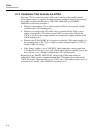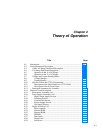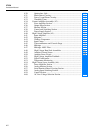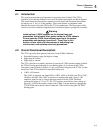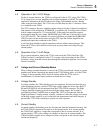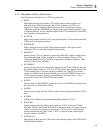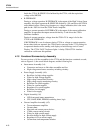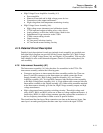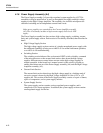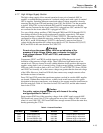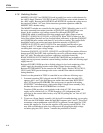
5725A
Instruction Manual
4-8
4-10. How the 5700A and 5725A Communicate
The 5725A and 5700A maintain all analog and digital communication over an external
cable connected to subminiature D-type connectors on the back of each instrument. All
in-guard (analog) signals, except B-VGRD, connect to relays that isolate the 5725A and
5700A whenever the 5725A is not in use.
Digital communication occurs over five out-guard (digital) 5700A lines, B-SCT, B-SCR,
B+5V, B+5VCOM, and B-CINT*. The B+5V and B+5VCOM lines power the 5725A
guard crossing and allow the 5725A to detect when the cable is disconnected. Lines B-
SCT and B-SCR provide serial communication of data over an RS-232 type line.
Optoisolators on the 5725A maintain the integrity of the guard. Line B-CINT* is a
hardwire loop that allows the 5700A to detect a cable off or 5725A power off condition.
4-11. Description of the Out-Guard Lines (5725A Side)
The following list describes the five 5725A out-guard lines:
• B-RCV (Serial Communication Receive)
Receives serial data from the 5700A; connects to the B-SCT line of the 5700A.
• B-XMIT (Serial Communication Transmit)
Transmits serial data to the 5700A; connects to the B-SCR line of the 5700A.
• B+5V
5700A out-guard supply that powers optoisolators and 5725A CABLEOFF relay.
• B+5VCOM
5700A out-guard supply common for above.
• B-CINT* (Boost Cable Interlock)
Hardwire "loop around system" on the 5725A that is polled at least every 100 ms by
the 5700A to determine if the 5700A/5725A cable is connected and if the 5725A is
turned on. Returns a low to the 5700A if above is true. A pull-up resistor on the
5700A leaves this line high if the interconnect cable is open or if the 5725A is turned
off.



